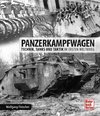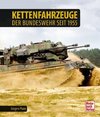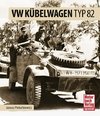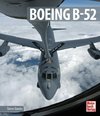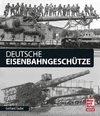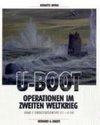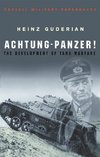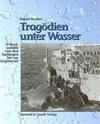
-
 Anglický jazyk
Anglický jazyk
United States Naval Special Warfare Command
Autor: Source: Wikipedia
Source: Wikipedia. Pages: 46. Chapters: United States Navy SEALs, United States Naval Special Warfare Development Group, Michael P. Murphy, United States Navy SEAL selection and training, Special Warfare Combatant-craft Crewmen, Michael A. Monsoor, Marcus... Viac o knihe
Na objednávku, dodanie 2-4 týždne
15.66 €
bežná cena: 17.40 €
O knihe
Source: Wikipedia. Pages: 46. Chapters: United States Navy SEALs, United States Naval Special Warfare Development Group, Michael P. Murphy, United States Navy SEAL selection and training, Special Warfare Combatant-craft Crewmen, Michael A. Monsoor, Marcus Luttrell, Richard Marcinko, Mark V Special Operations Craft, List of Navy SEALs, Danny Dietz, Thomas R. Norris, Eric T. Olson, Erik S. Kristensen, William H. McRaven, Scott Helvenston, Christopher Cassidy, Naval Small Craft Instruction and Technical Training School, Matthew Axelson, Operation Thunderhead, Donald L. McFaul, Joseph D. Kernan, Robert Harward, Albert Calland, Joseph Maguire, La Posta Mountain Warfare Training Facility, Naval Special Warfare Center, Red Cell, Naval Special Warfare Cold Weather Detachment Kodiak, Stephen Bass, Someone Special, Naval Special Warfare Advanced Training Command. Excerpt: Other roles: The United States Navy's Sea, Air and Land Teams, commonly known as Navy SEALs, are the U.S. Navy's principal special operations force and a part of the Naval Special Warfare Command (NSWC) as well as the maritime component of the United States Special Operations Command (USSOCOM). The acronym is derived from their capacity to operate at sea, in the air, and on land. In the War on Terror, SEALs have been utilized almost exclusively for land-based operations, including Direct Action, Hostage Rescue, Counter Terrorism, Special Reconnaissance, unconventional warfare and foreign internal defense operations. Without exception, all SEALs are male members of either the United States Navy or the United States Coast Guard. Precursors to the Navy's SEAL program originated during the Second World War when the United States Navy recognized the need for soldiers to reconnoiter landing beaches, note obstacles and defenses, and ultimately guide the landing forces in. As a result the Amphibious Scout and Raider School was established in 1942 jointly by the Army and Navy at Fort Pierce, Florida. It was intended to train explosive ordnance disposal personnel and experienced combat swimmers from the Army and Marine Corps, becoming the Naval Combat Demolition Unit, or N.C.D.U. The NCDU was first employed in Operation Torch during the invasion of North Africa in 1942. This unit became the 'first group' specialized in amphibious raids and tactics in the United States Navy. By 1943, the Amphibious Scout and Raider School syllabus had expanded to include underwater demolition. Following the invasion of Tarawa in November 1943, when offshore coral reefs and other obstacles in the surf resulted in many of the Marines drowning or being hit by enemy fire because their landing craft could not reach the beach, Rear Admiral Richmond K. Turner directed the formation of nine Underwater Demolition Teams (UDTs) mostly composed of navy personnel from the Naval Construction Battalions (Sea
- Vydavateľstvo: Books LLC, Reference Series
- Rok vydania: 2012
- Formát: Paperback
- Rozmer: 246 x 189 mm
- Jazyk: Anglický jazyk
- ISBN: 9781156628935

 Nemecký jazyk
Nemecký jazyk 